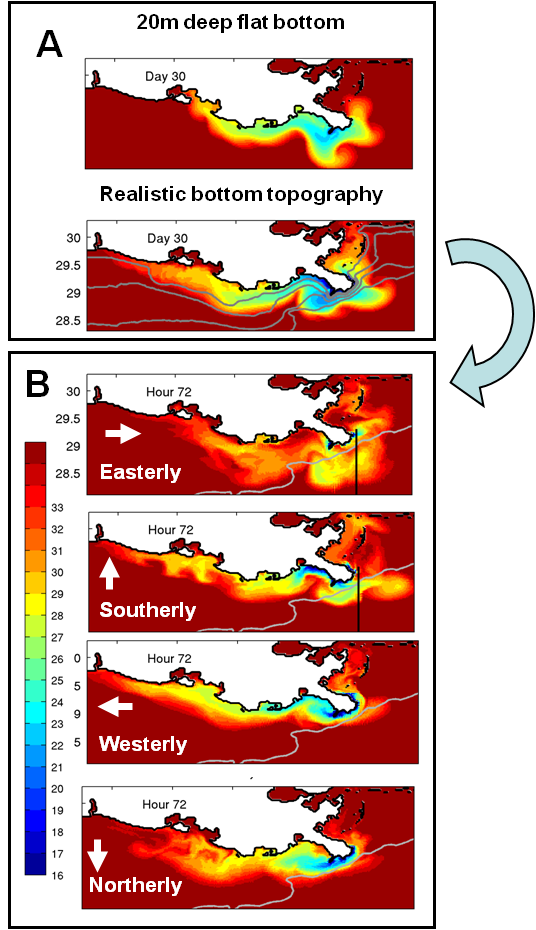The distribution and dispersion of Mississippi River freshwater along the Northern Gulf of Mexico shelf is controlled by a variety of factors, which include coastal and bottom topography, wind forcing and ambient shelf/deep basin currents. Particular characteristics of the Mississippi River delta morphology and dynamic setting make it a unique study case to compare to the well established knowledge of large river plume dynamics. Moreover, the understanding and prediction of environmental issues in the region, such as the recurrent summertime hypoxia in the vicinity of the delta, can be tackled trough understanding the dynamics of the Mississippi River plume.
Process-oriented model simulations are used to study the circulation of the plume, by employing only buoyancy forcing under variable bottom topography and in the presence/absence of winds, in order to examine the factors that influence the plume development and evolution. This study builds on upon idealized process oriented river plume studies with the HYCOM model.




